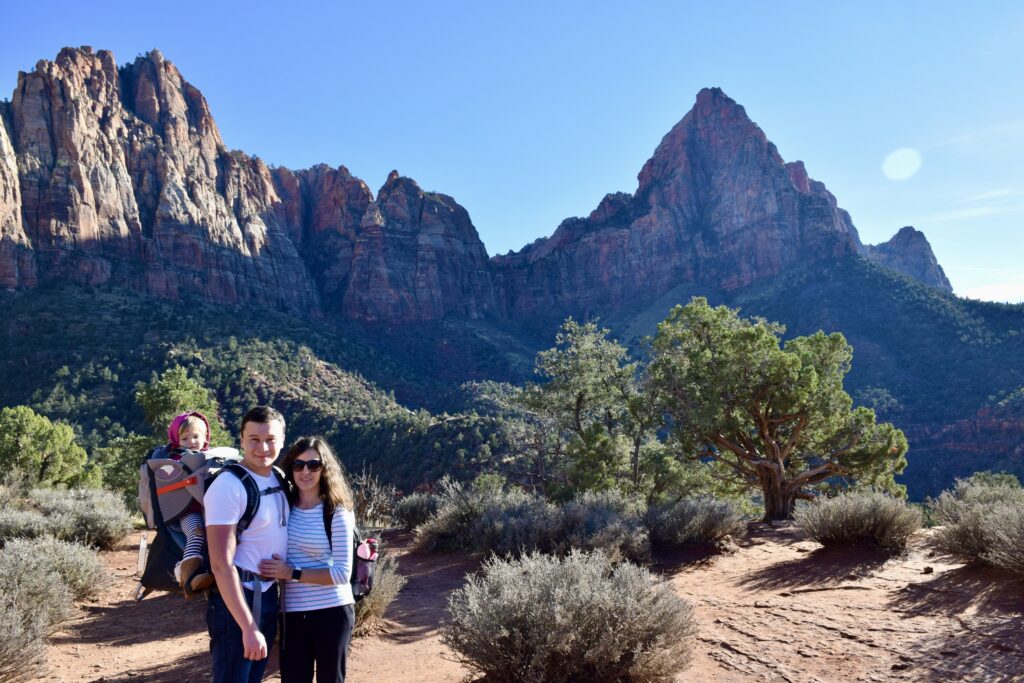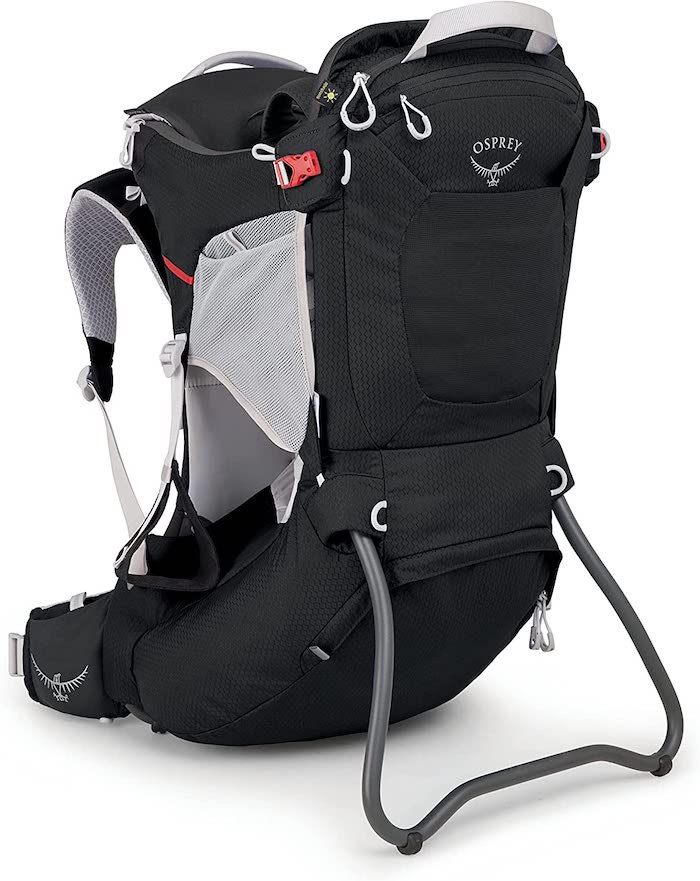
Did you know there are 424 units in the U.S. National Park System, including 63 National Parks, 19 National Preserves, and 83 National Monuments? If you are a nature enthusiast and love hiking and exploring, a National Park might be a perfect place to visit. We have been to 20 National Parks with kids and still have a long way to go before we visit them all, but we can already say that they are unique and breathtaking.
Nonetheless, when it comes to visiting National Parks with the little ones, there are some common things to consider, ranging from planning your visit to participating in the park’s programs. In this post, we will talk about everything you need to know about visiting National Parks with kids.
Affiliate Disclosure: Some of the links in this post may be affiliate links, which means I may earn a commission if you click through and make a purchase, at no additional cost to you. I only recommend products and services I use and love. As always, all opinions are my own.
How to plan your visit to the National Park?
As easy as it sounds, the very first thing you need to do before visiting a National Park is to plan your visit and research! Usually, the most helpful resource is the NPS.gov website, where each National Park System Unit has its own page that describes everything in detail.

Best time to visit a National Park
As we mentioned above, there are dozens of National Parks, and they are spread nationwide! Before going, check the best time to visit the particular National Park you’re interested in. Knowing about the excessive summer heat, winter freezing temperatures, and road closures is especially important when visiting with kids. Some National Parks, such as Death Valley National Park or Saguaro National Park, are definitely not recommended for visiting in summer due to intense heat.
It’s also important to consider the crowds when planning your visit to a National Park with kids. Some National Parks can get very crowded, especially during peak season and holidays. Consider visiting during off-peak times, or arrive early in the morning or later in the afternoon to avoid the crowds.

Kid-friendly hikes
Research some kid-friendly hikes and consider all the factors, such as the length of the hike, elevation, and difficulty (easy, moderate, strenuous). Depending on how many days you have to spend in the park, opt for a single longer hike or multiple shorter hikes.
As always, be ready to adapt and change your plans accordingly if you, let’s say, decide to spend more time in one area of the park and don’t have enough time for another.

One of our favorite websites for finding a perfect trail is AllTrails. You can search for trails in a particular National Park and refine your search by length, activities, and difficulty!
Things to bring to the National Park

Kid-friendly hiking gear
Hiking, in general, requires you to have specific gear. When visiting a National Park with kids, prepare yourself for long walks, hikes, and exploring, so getting kid-friendly hiking gear before your visit is a must.
You can read more about our tips for stress-free trips with kids here.
You may ask, what are some of our favorite things from the hiking with kids checklist we tested over the years? Let’s take a look:
Ergobaby 360 All-Position Baby Carrier
The Ergobaby 360 has been our favorite carrier for hiking with babies. It is lightweight, comfortable for both parent and baby, and has different carry positions (including facing forward and back carry).

Ergobaby 360 All-Position Baby Carrier
Adventure with baby anywhere with the Ergobaby 360 Carrier. This comfortable, all-position carrier keeps your little one close in front, back or hip carries. Padded straps distribute weight evenly for easy wearing. Breathable mesh keeps baby cool. Perfect for travel, this carrier bonds you and baby from tot to toddler.
Osprey Poco Child Carrier
For older kids, we suggest you get one of the child carriers that is relatively lightweight and comfortable. POCO PLUS Child Carrier has been our go-to carrier for years now (now with a second kid). We used it on longer and more strenuous hikes up until our daughter was four years old. Definitely, a must-have for hiking with kids in the National Parks!
Osprey Poco Child Carrier
Adventure together with the Osprey Poco Child Carrier. This comfortable backpack carrier lets kids ride along on any trip. Adjustable harness customizes the fit for parent and child. Padded cockpit, sunshade and foot stirrups keep kiddos cozy. Large cargo area fits necessities. Easy carrying for trails, travel and everyday.
Hiking Poles
Hiking poles have been handy when exploring National Parks with kids. These collapsible hiking poles are very lightweight, have an adjustable height (perfect for young kids), and are ideal for any weather condition. They are very easy to use, and our daughter felt more confident while doing more challenging hikes.
TrailBuddy Trekking Poles
Hike in comfort with TrailBuddy Trekking Poles. These lightweight, adjustable poles provide stability mile after mile on trails. Aluminum shafts reduce knee/joint strain; ergonomic cork grips keep hands comfy. Easily collapse to pack neatly for travel.
Best hiking shoes for kids
Make sure to get sturdy shoes with good traction for yourself and your kids. Nothing is more annoying than aching feet when you are still eager to explore. Obviously, little kids tend to get tired faster, so make sure that their feet have that extra needed support while they are hiking, running, or climbing.
Kids Hiking Shoes
Let kids explore in comfort with Mishansha Hiking Shoes. These sneakers provide cushioned support for outdoor play and adventures. Protective toe cap and non-slip sole for terrain grip during hikes and climbs. Breathable mesh keeps feet cool. Growing kids need extra foot support, so empower yours to keep pace.
Water
Bring plenty of water! We can not emphasize this enough, make sure to have enough water to last for hours, especially when visiting National Parks in summer. In our family, each person has a stainless steel water bottle that we usually refill at the Visitor Center, and we also bring some extra water.
Snacks
You know little kids, they are always hungry! Pack lots of snacks to make your National Park experience more enjoyable! We love the individually wrapped granola bites, dry fruits, and nuts.
Entrance fees and Annual Pass to the National Park
The entrance fee to the National Parks is $30-$35 per vehicle and is valid for seven days. However, the National Park Service offers an Annual Pass that allows holders unlimited entries to any National Parks and National Monuments (it can be purchased at the kiosk right at the park entrance).
The annual pass, called America the Beautiful, costs $80 and is valid for one year from the date of purchase. The annual pass is a good investment for frequent visitors to the National Parks, and it will pay itself off when you visit more than three parks in a year.

If you only plan to visit a few National Parks or are on a tight budget, purchasing a single-use entrance pass for the park you plan to visit may be more cost-effective.
💡Good to Know
Did you know that fourth-graders can get a free annual pass to visit National Parks? To obtain the free pass, fourth-grade students should visit the Every Kid Outdoors website and download a voucher.
The voucher is valid from September 1st to August 31st (for the school year when the student is in fourth grade). This pass grants free entry for fourth graders, all other kids in the group, and up to three accompanying adults (or an entire car).
Go to the National Park Visitor Center
Every National Park has an administrative building called a Visitor Center. If you are visiting a particular National Park for the first time, consider stopping at the Visitor Center first. It is a perfect place to learn about the park and address all your questions to a Park Ranger.
Some Visitor Centers have small museums and even show short educational movies about the park’s history. Different locations may vary slightly, but most also have a cafe to grab a bite and a gift shop to get some souvenirs.

Junior Ranger Badge at National Parks
The Junior Ranger program is a free educational program offered by the National Park Service that allows children to learn more about National Parks.

This program encourages children to explore the parks and learn about nature and history. To participate in the program, simply visit the Visitor Center and pick up a complimentary Junior Ranger activity book. The book includes various fun and educational activities such as answering some questions, games, and drawing. We usually complete the activities in the book while exploring the park and then return the completed book to a park ranger to take an oath and receive a special collectible Junior Ranger badge.
National Parks Passport
The National Parks Passport is a program offered by the National Park Service that allows visitors to collect stamps from different National Parks.
The passport program is a fun and educational way to keep track of your visits to the National Parks and to learn more about the incredible places that the National Park Service protects.

You can purchase a Passport Book at any National Park or online, and it includes spaces for stamps from each National Park, as well as information about the parks and their history. After, just go to the Visitor Center at each National Park you visit and get your Passport Book stamped with a “cancellation” (a rubber ink stamp that records the name of the national park and date).
Leave No Trace
National Parks are uniquely preserved areas that may encompass millions of acres of wilderness. Visiting a National Park with kids is a great way to teach them about the Leave No Trace concept. It is important to leave nature and the wildlife world undisturbed. Staying on trails, leaving things you find where they were, and properly disposing of waste are some of the main Leave No Trace principles to follow to protect the National Parks!
Bottom line
In conclusion, visiting National Parks with kids can be an unforgettable adventure that combines outdoor recreation, exploration, and learning. By following some simple tips and guidelines, families can make the most of their visit and create lasting memories while fostering a deeper appreciation for the natural world.





